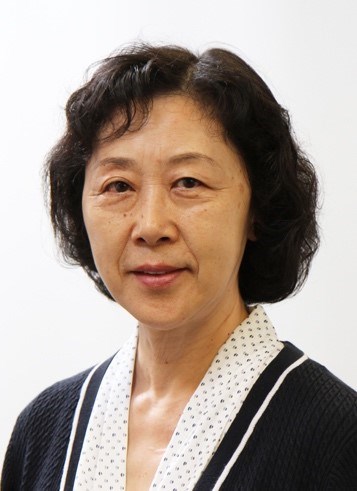SPE announces 2019 ACCE Best Paper award winners
The three winning authors will present their papers at the SPE ACCE conference this week in Novi, Michigan.
The organizing committee for the SPE Automotive Composites Conference & Exhibition (ACCE) has announced the Best Paper Award winners of the group’s nineteenth-annual show, which takes place Sept. 4-6 in Novi, Mich., U.S. The three winners will be honored for excellence in technical writing with a commemorative plaque during the SPE ACCE opening ceremonies today:
- Sara Andrea Simon, a Ph.D. candidate at the Polymer Engineering Center (PEC) at the University of Wisconsin-Madison (Madison, Wis., U.S.), won first place in this year’s competition,
- Dr. Xiaoming Chen, a technical expert at Ford Motor Co. (Dearborn, Mich., U.S.), won second place, and
- Dinesha Ganesarajan, a graduate student working on his Master of Science degree in the Chemical Engineering department at the University of Waterloo (Waterloo, Ontario, Canada), placed third in the competition.

Sara Andrea Simon. Source | SPE
Sara Andrea Simon won first place for her paper titled “Direct Fiber Model Validation: Orientation Evolution in Simple Shear Flow.” The paper will be presented on Sept. 4 from 1-1:30 p.m. in the Advances in Thermoplastic Composites session at the conference. About this topic, the author says, “The ability to simulate the processing of fiber-reinforced composites has become indispensable for the automotive industry. Particle-level simulation, in specific, is a promising tool that can be employed in the improvement of commercial software. In this work, reliable fiber orientation evolution data was obtained to aid in the validation and development of our particle modeling approach for reinforcing fillers.”
Simon is currently working in collaboration with Volkswagen on a new physical foaming injection molding technique to advance lightweight automotive constructions.

Dr. Xiaoming Chen. Source | SPE
Dr. Xiaoming Chen won second place in the competition for her paper titled “Fatigue and Strength CAE and Test Results.” She will present her paper on Sept. 6 from 10:30-11 a.m.in the Opportunities and Challenges with Carbon Composites session at the conference. “The carbon fiber composite subframe design was CAE driven,” Chen says. The performance of the prototype subframe was verified by component and vehicle tests. The CAE predictions for the tests had various degrees of correlation with the physical test results.”
Chen holds a Ph.D. in mechanical engineering from Northwestern Polytechnical University in China and is an Alexander von Humboldt fellowship recipient. Chen started her career as a crash safety engineer at Ford Truck Operations and later joined the Lightweight Architecture Team of Research and Advanced Engineering. Her current projects are related to lightweight chassis systems and components using advanced high-strength steel, aluminum, magnesium and composites materials.

Dinesha Ganesarajan. Source | SPE
Dinesha Ganesarajan’s paper is titled “Latest Breakthroughs with Hybrid Reinforced Composites in Lightweight Applications.” Dr. Leonardo Simon, University of Waterloo and ACCE technical program co-chair, will present his paper on Sept. 5 from 10:30-11 a.m. in the Sustainable Composites session at the conference. “My work explores the utilization of hybrid composites in the automotive industry for body interior and under the hood applications," Ganesarajan says of his project. “The use of naturally-sourced filler material with the combination of glass fiber yields superior performance properties with a lightweighting initiative. This is a necessary intermediate step to achieve the ambitious goal of a circular economy just like the introduction of hybrid vehicles before the emergence of electrification.”
Ganesarajan is a graduate student pursuing a Master of Science degree at the University of Waterloo’s chemical engineering department. His thesis topic explores the use of naturally-sourced filler materials being combined with glass fiber to produce hybrid composites for body interior and under-the-hood applications in the automotive industry. He completed his undergraduate program at the University of Waterloo majoring in chemical engineering with an energy systems specialization.
Related Content
Jeep all-composite roof receivers achieve steel performance at low mass
Ultrashort carbon fiber/PPA replaces steel on rooftop brackets to hold Jeep soft tops, hardtops.
Read MoreTPI manufactures all-composite Kenworth SuperTruck 2 cab
Class 8 diesel truck, now with a 20% lighter cab, achieves 136% freight efficiency improvement.
Read MoreComposites end markets: Automotive (2024)
Recent trends in automotive composites include new materials and developments for battery electric vehicles, hydrogen fuel cell technologies, and recycled and bio-based materials.
Read MoreInfinite Composites: Type V tanks for space, hydrogen, automotive and more
After a decade of proving its linerless, weight-saving composite tanks with NASA and more than 30 aerospace companies, this CryoSphere pioneer is scaling for growth in commercial space and sustainable transportation on Earth.
Read MoreRead Next
Developing bonded composite repair for ships, offshore units
Bureau Veritas and industry partners issue guidelines and pave the way for certification via StrengthBond Offshore project.
Read More“Structured air” TPS safeguards composite structures
Powered by an 85% air/15% pure polyimide aerogel, Blueshift’s novel material system protects structures during transient thermal events from -200°C to beyond 2400°C for rockets, battery boxes and more.
Read MoreAll-recycled, needle-punched nonwoven CFRP slashes carbon footprint of Formula 2 seat
Dallara and Tenowo collaborate to produce a race-ready Formula 2 seat using recycled carbon fiber, reducing CO2 emissions by 97.5% compared to virgin materials.
Read More
.jpg;width=70;height=70;mode=crop)

























